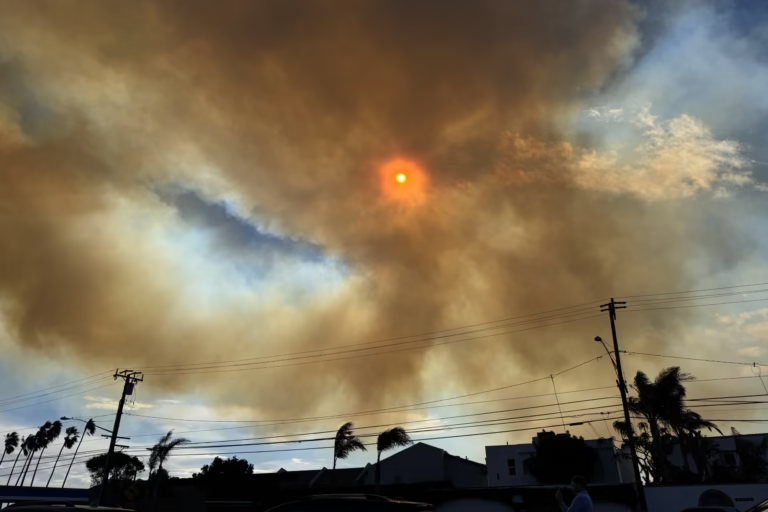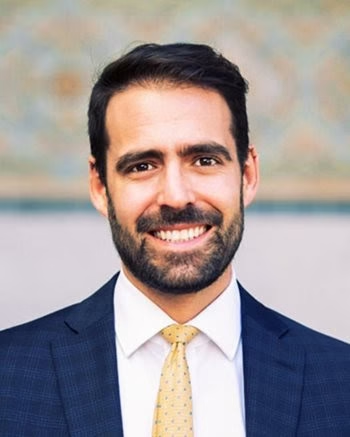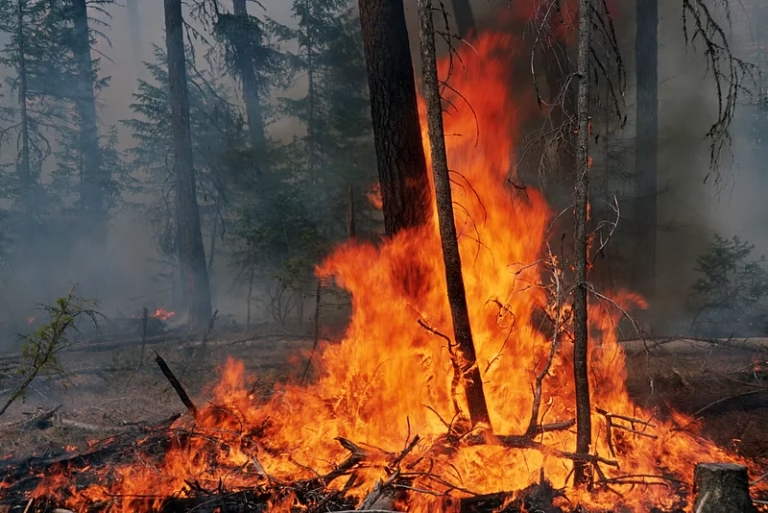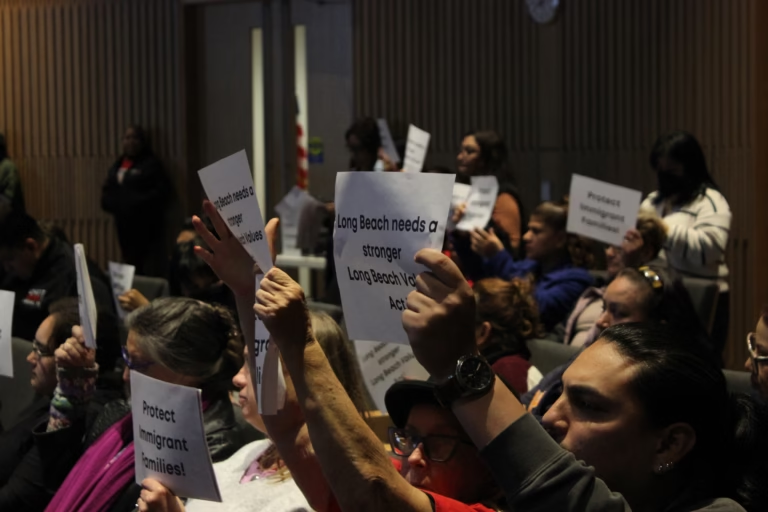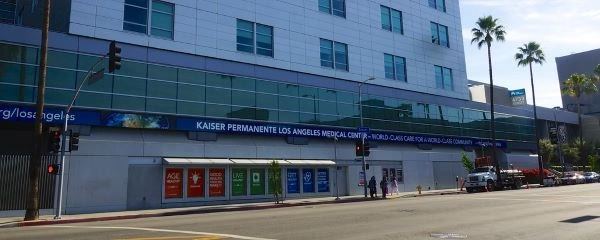Pushing Back Against Misinformation
By Emma Rault
Last Tuesday, extreme weather conditions sparked what quickly grew into some of the most destructive wildfires in California history. Ripping through various communities across LA County, they have displaced thousands, killed at least 24, and caused up to $275 billion in damage. As of right now, the two largest fires, which destroyed large swathes of Pacific Palisades and Altadena, are still not contained, with the dangerous winds set to return this week.
Over the past week, as Angelenos rallied in huge numbers with donation drives and other volunteer efforts, a storm of misinformation and rumors kicked up on social media. Random Lengths fact-checked some of the claims. Here’s what we know so far.
What are Santa Ana winds?
The Santa Ana winds are strong, dry winds that blow in from the desert interior of the West — the Great Basin, which includes Nevada and parts of Utah — to coastal Southern California. As they travel, they pick up speed, warm up, suck moisture out of the air and vegetation, and cause critical fire conditions.
Was it arson?
We don’t know yet. However, it’s worth pointing out that in these wind and drought conditions, all it takes is one spark — something as tiny as a cigarette butt, power lines slapping together, or even a hot car exhaust.
“Most human-caused fires are not intentional,” UC Merced climatology professor John Abatzoglou told NBC News. While the wildfires are devastating, they are unlikely to be the result of malicious intent.
The role of power lines is worth investigating. Utility equipment previously caused major wildfires in Paradise, CA and Maui, Hawaii. In recent years, Southern California Edison paid hundreds of millions of dollars in settlements related to wildfires. Now, utility companies again find themselves under scrutiny.
Did manmade climate change cause these fires?
It’s definitely a factor. Alternating wet and dry spells are part of our normal weather pattern — as are Santa Ana winds, even if these have been stronger and later in the season than tends to be the case. But climate change is causing more rapid swings between wet and dry conditions. This so-called “hydroclimate whiplash” is on the rise across the globe.
LA’s last two rainy seasons were extremely wet, with more than 25 inches in both 2022 and 2023. They were followed by a hot summer — and what’s shaping up to be a record-dry winter. Our last significant rainfall was in May 2024 and totaled just 0.13 inches.
KQED climate reporter Ezra David Romero broke it down on NPR: “During those wet periods, we see rapid growth in fuels — things like the grass, brush and trees. And then if a dry period follows, then all that moisture gets sucked out, leaving the fuel super ready to burn.”
But there are other manmade factors besides global warming that are also crucial. One of them is the overdevelopment of the so-called “wildland-urban interface,” the areas where houses intermingle with natural terrain.
These areas are stunningly beautiful, and in some cases their remote, rugged character made them more affordable enclaves for artists and marginalized communities. But over time, they have seen greater population densities than they can safely sustain. In his 1998 book Ecology of Fear, LA historian Mike Davis describes how efforts to establish “hazard zoning” were sunk by the real-estate lobby, resulting in “the rampant, uncontrolled proliferation of firebelt suburbs.”
The sprawling “wildland-urban interface” means wildfires affect more people when they happen. It also makes them worse and more frequent. More than 95% of wildfires are caused by human presence. Meanwhile, modern homes are full of toxic, flammable materials like “plastics, synthetics and electronics,” fire historian Stephen Pyne pointed out in an interview with Al Jazeera.
Another factor is the mismanagement of the landscape. For many millennia, Indigenous people used “cultural burns”: they would deliberately and strategically burn patches of the landscape on a rotating basis to get rid of excess plant material and encourage the regrowth of certain plant species. This also prevented wildfires from getting out of control, as they would die down upon hitting burn scars from earlier controlled burns.
However, this practice was outlawed in 1850 — just months after California statehood — and has only recently begun to make a comeback. Over time, this illegalization of Native land stewardship led to overgrowth and invasive species taking over the hillsides, Jessa Calderon — who is Tongva, Chumash, and Yoeme and serves as the Land, Water, and Climate Justice Director at the Sacred Places Institute for Indigenous Peoples — explained in an email to Random Lengths.
Some of these invasive species burn faster and hotter. A lot of neighborhoods, too, are full of non-native, ornamental plant species in backyards and public landscaping, Calderon points out. Some of these — like eucalyptus and Peruvian pepper trees — are actually highly flammable, too.
All of this matters, not only because of its role in the current fires but because it should impact decisions going forward. We need to change our approach to landscape management in our built communities.
Speaking to the LA Times, fire scientist Jack Cohen highlighted the importance of such prevention strategies. “We don’t have to solve climate change in order to solve our community wildfire risk problem,” Cohen said.
Did the firefighters run out of water because Newsom removed dams?
No. On January 8, Fox News host Jesse Waters drew a connection between dam removals and the Los Angeles wildfires, saying that Democratic California Governor Gavin Newsom tore down four dams “because the Native Americans told him to do it.”
He was referring to four dams on the Klamath River in northernmost California. Southern California does not — and has not at any point — received water from these dams.
They were built to generate electricity in the first half of the 20th century, an era of frantic dam-building and waterway diversion in the American West. However, this turned out to come at a huge cost. Many dams lose hundreds of billions of gallons of water every year to surface evaporation and underground seepage. (Watch a quick explainer of the science here.) In other words: dams make drought worse.
They also decimate important ecosystems. “These dams…blocked salmon migration and disrupted ecosystems by trapping sediment and creating shallow, warming reservoirs that fueled toxic algae blooms,” artist and community organizer Jearica Fountain, who belongs to the Karuk tribe, wrote on Facebook. Salmon are a keystone species, meaning if they perish, their habitat dies with them. More than 70,000 salmon died on the Klamath River in 2002 in one of the the worst mass die-offs in US history.
The dam removals were an important step forward — the result of decades of advocacy by the local Yurok and Karuk tribes, and a joint effort between them, the federal government, California, Oregon, the dams’ owners, and other entities.
This misinformation quickly gained traction online. The scapegoating of the Indigenous tribes involved in the dam removal project was all the more troubling when, in fact, Klamath Tribes firefighters were on the ground in LA fighting the fires, alongside more local tribes like the Payómkawichum from the Pechanga Reservation in Riverside County, who sent firefighters and committed $500,000 to helping victims of the fires.
Also, the LA firefighters didn’t actually run out of water. According to a LADWP statement, a number of fire hydrants lost pressure because so many had to be opened all at once — wind conditions did not allow for aerial drops at that point. LADWP “immediately deployed potable water tankers” when this happened.
Did Mayor Bass cut the LAFD’s budget?
It’s complicated. The budget was ultimately increased from last year, but LAFD was forced to make do with fewer staff members and fewer overtime hours — with opinions on the impact varying.
A quick recap: Karen Bass became mayor on December 12, 2022. City budgets run from July 1 to June 30. The mayor isn’t solely in charge of the City budget — she drafts a budget proposal that is discussed in a series of public hearings and voted on by the city council. (See this article for a more detailed breakdown of the City’s budget process.)
The Los Angeles Fire Department’s 2024–25 budget decreased by $17.6 million, with reductions in overtime staffing, salaries, bonuses, supplies, and uniforms. But after the budget was adopted, salary negotiations with the United Firefighters of Los Angeles City union continued. In November the City Council approved an additional $76 million. The union negotiations, in other words, resulted in a budget increase of more than $53 million.
However, this additional funding was earmarked solely for the salaries and benefits negotiated by the union — it didn’t bring back cut positions or overtime hours. (The City memo on the budget increase lays this out; it was confirmed in an email to Random Lengths from the LA City Controller’s office.)
In a December 2024 memo to the Mayor and City Council, LAFD Fire Chief Kristin Crowley flagged up concern about precisely these cuts, saying the reduction in overtime hours had “severely limited the Department’s capacity to prepare for, train for, and respond to large-scale emergencies.”
The upshot is that while the budget was ultimately increased compared to last year, the LAFD isn’t getting what it needs. That’s not all on Bass, though — it’s a systemic problem that has existed for decades. Seminal LA historian Mike Davis, writing in the aftermath of the 1993 Malibu fires, talked about “the understaffed and underfunded Los Angeles Fire Department — Cinderella to its greedy big sister, the LAPD.” (This year the LAFD got $819 million, compared to the LAPD’s nearly $2 billion.)
At the same time, wildfire experts say the focus needs to extend beyond firefighting manpower to prevention measures. Communities can be protected through brush clearing and “home-hardening” strategies such as proper landscaping and fire-resistant siding, the LA Times writes. “[This issue] is so solvable if we determine to do it,” fire scientist Jack Cohen told the Times.
Are prisoners really fighting these fires?
Yes. Nearly 400 inmates are among the 14,000 people fighting the wildfires on the ground. Inmates make up around 30% of the firefighters in California. Inmates who volunteer to join this program are trained in 35 fire camps (or “conservation camps”) across the state. They are paid around $27 for a 24-hour shift.
Jeremy Lindenfeld, a reporter for Capital & Main, spoke to some of the incarcerated firefighters currently risking their lives battling the blazes. “They…said they all wanted to be there & that they see the work as an important way to give back to the community,” he wrote on X. But they also told him they were not given regular meals, were pulling 24-hour shifts, and feel “under-appreciated and underpaid.”
The Anti-Recidivism Coalition has set up a fundraiser to support them. Contributions will go toward immediate needs like food and hygiene supplies, fire camp upgrades, and scholarships for individuals once they are released. You can donate here — put “firefighter fund” in the donation description.



